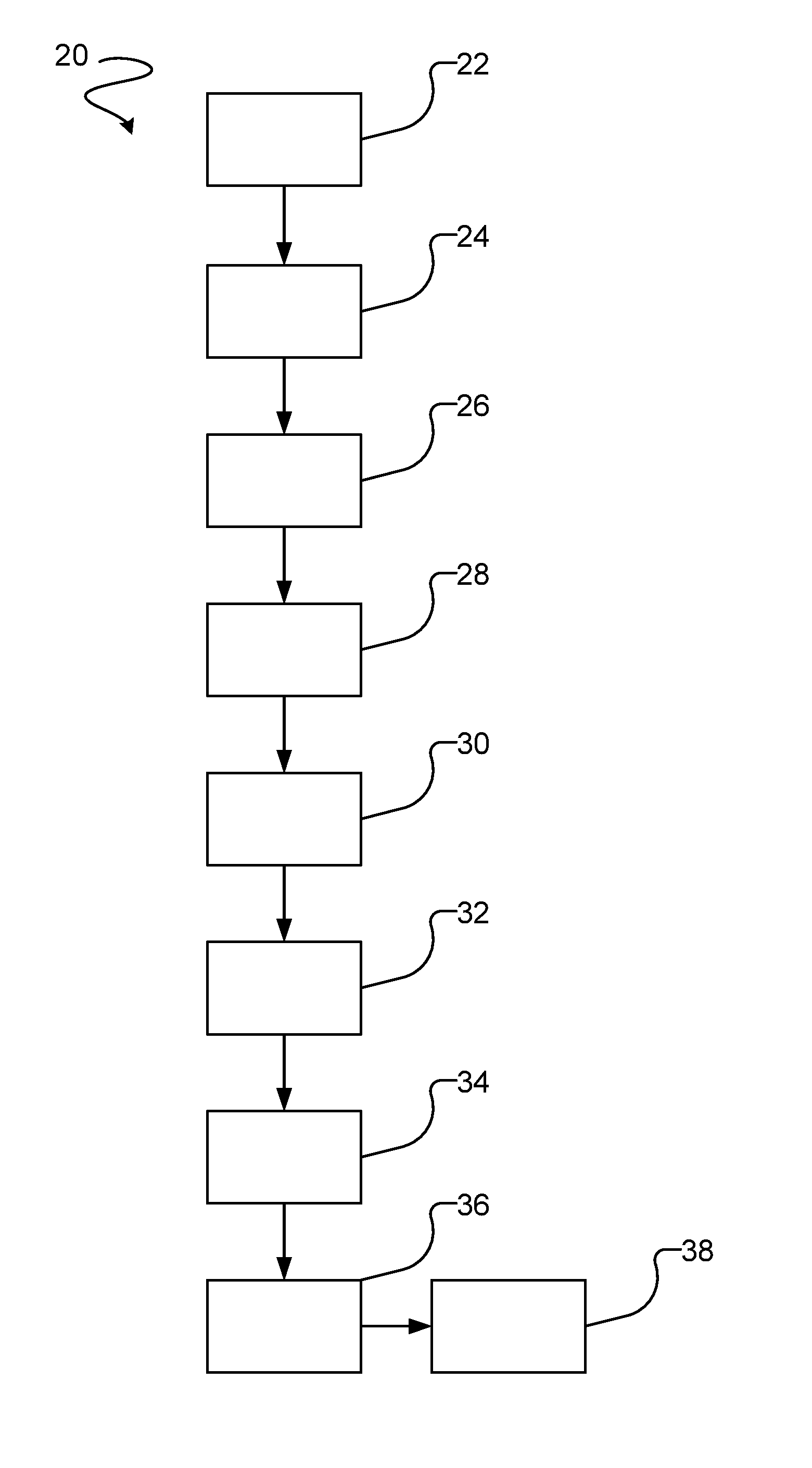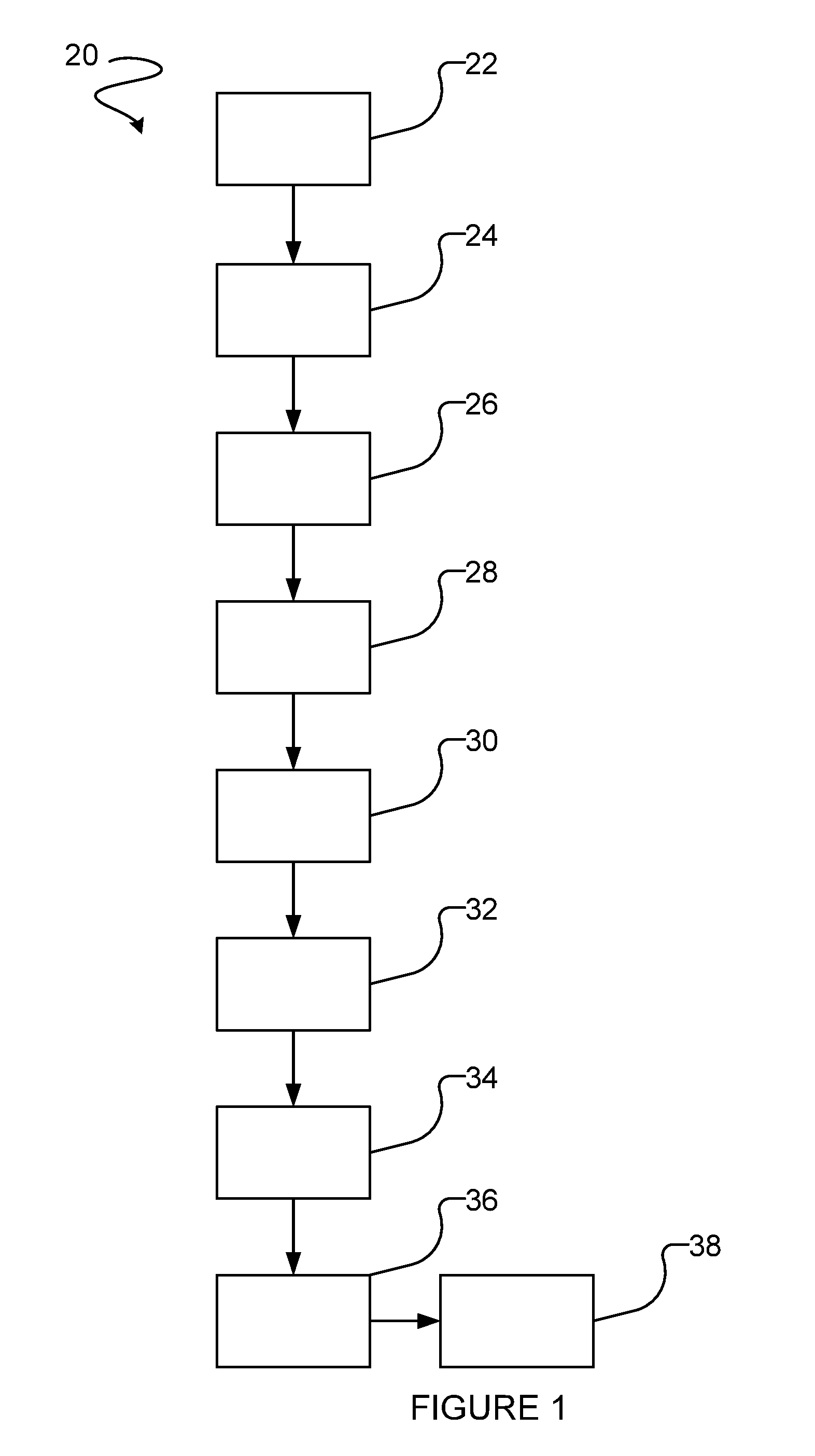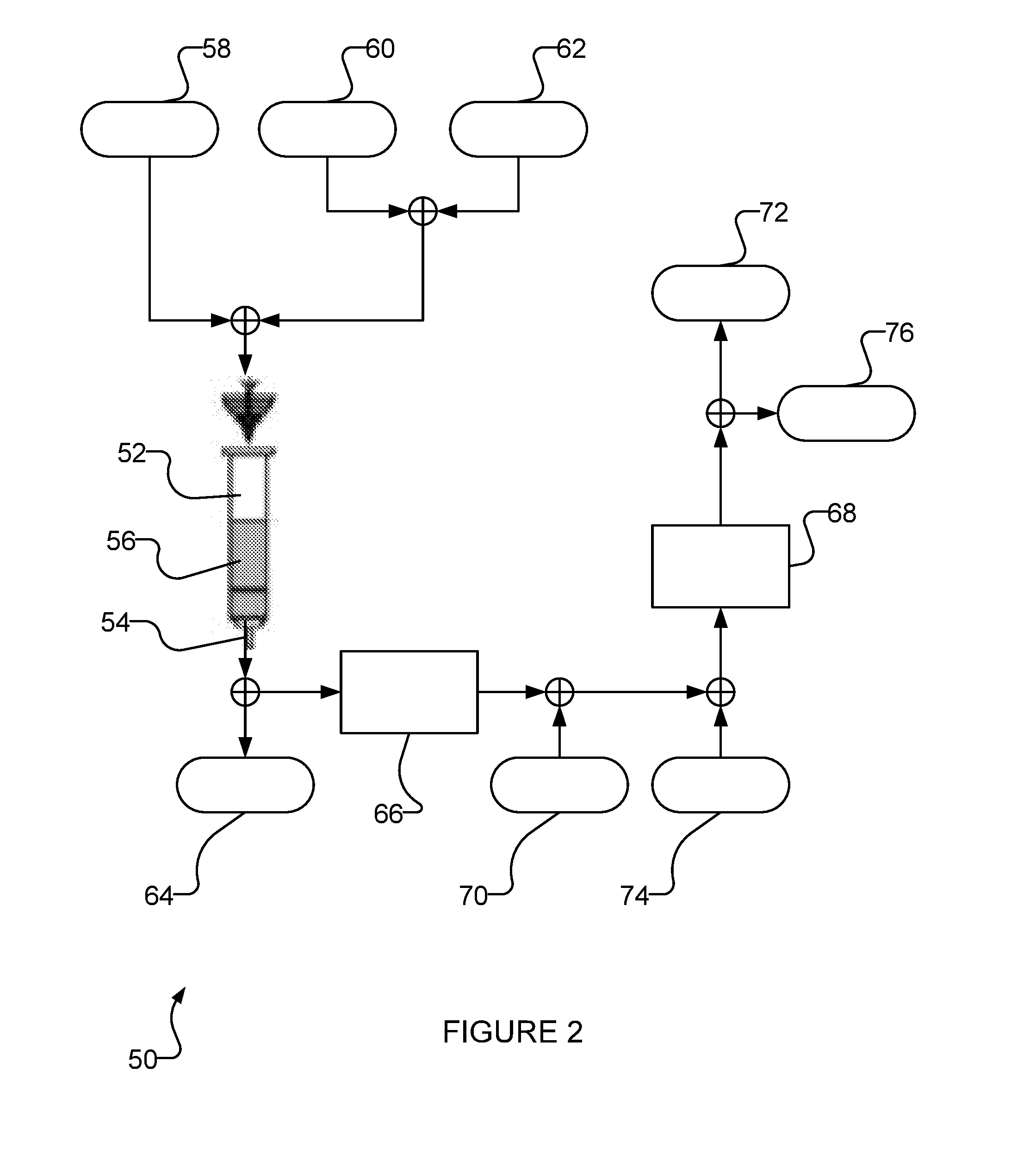Process and apparatus for separation of technetium-99m from molybdate
a technology of molybdate and process, which is applied in the direction of chemical to radiation conversion, specific isotope recovery, nuclear engineering, etc., can solve the problems of limited practical utility for clinical use, difficult final product quality control, and less amenable automation approaches, so as to improve the yield of solid-phase synthesis, improve the effect of chemical resistance and high binding capacity
- Summary
- Abstract
- Description
- Claims
- Application Information
AI Technical Summary
Benefits of technology
Problems solved by technology
Method used
Image
Examples
example 1.0
Materials and Methods
Example 1.1
Preparation of Alkaline Solutions of Mo Containing 99mTcO4−
[0100]For each experiment with each ChemMatrix® resin type, 2 g of molybdenum metal was dissolved in 20 ml of hydrogen peroxide to simulate the dissolution of a molybdenum metal target plate. Approximately 5 ml of the hydrogen peroxide volume evaporates during this process. 10 ml of 10M NaOH was slowly added to reach a final solution concentration of 4M NaOH. A solution of 4M NaOH has a pH of approximately 14. The hydrogen peroxide is highly reactive when in contact with molybdenum and sodium hydroxide, and the reaction is exothermic. The initial yellowish colour of the molybdenum solution becomes clear as the solution becomes alkaline. Pure Tc-99m pertechnetate tracer was added to this solution to reproduce the conditions encountered after target irradiation and dissolution.
example 1.2
Pre-Conditioning ChemMatrix® Resins
[0101]In some experiments ChemMatrix® resins were preconditioned with water, where swelling was immediately noticeable, followed by the addition of 4M NaOH over a period of not less than 15 minutes. In the alkaline solution, there is an immediate and obvious reduction in the volume of the resin bed.
[0102]The resin was packaged in solid phase extraction cartridge attached with Luer-type connectors, omitting the top frit—practical experiments quickly revealed that the swelling of the resin can obstruct flow if the resin is compacted between two frits, and sufficient head space is necessary for resin expansion.
[0103]In later experiments, ChemMatrix® resins were preconditioned directly with 4M NaOH over a period of not less than 15 minutes, without preconditioning in water, with equivalent results. Proper packing of the resin after conditioning by 4 M NaOH was ensured to reduce variability of the results and improve trapping.
example 2.0
Isolation of 99mTcO4− from Alkaline Solutions of Proton-Irradiated 100Mo Targets Using Aminomethyl ChemMatrix® Resin
PUM
| Property | Measurement | Unit |
|---|---|---|
| Molar density | aaaaa | aaaaa |
| Digital information | aaaaa | aaaaa |
| Digital information | aaaaa | aaaaa |
Abstract
Description
Claims
Application Information
 Login to View More
Login to View More - R&D
- Intellectual Property
- Life Sciences
- Materials
- Tech Scout
- Unparalleled Data Quality
- Higher Quality Content
- 60% Fewer Hallucinations
Browse by: Latest US Patents, China's latest patents, Technical Efficacy Thesaurus, Application Domain, Technology Topic, Popular Technical Reports.
© 2025 PatSnap. All rights reserved.Legal|Privacy policy|Modern Slavery Act Transparency Statement|Sitemap|About US| Contact US: help@patsnap.com



